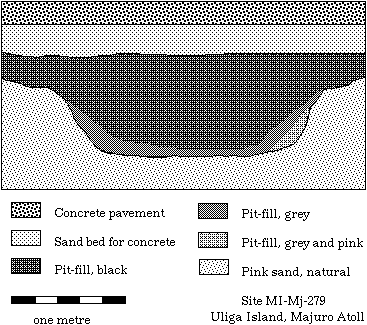

|
Essays on the Marshallese Past
Compliance Archaeology |
The archaeological sites on the
Prime settlement land is limited on the atolls of the
To safe-guard the heritage, rules exist, which everybody has to follow. Every
developer, private of corporate, needs to announce any construction affecting the ground
at least 30 days in advance of construction. The Historic Preservation Office, or qualified
personnel employed to do so, will then conduct a survey to find out whether archaeological
sites are present or not. The team will walk over the land and will look for signs of old
habitation, burials and so forth. If such sites are found, and if these sites are deemed
to be significant for the heritage of the

Drawing showing an
| select from the following... | ||||||
| |
||||||
|
Digital Micronesia-An
Electronic
Library & Archive
is provided free of charge
as an advertising-free
information service
for the world community. It is being maintained by Dirk
HR Spennemann, Associate
Professor in Cultural
Heritage Management, Institute of Land, Water and Society and School
of Environmental & Information Sciences, Charles
Sturt University,
Albury, Australia. The server
space and technical support are provided by Charles
Sturt University as part of its commitment
to regional engagement. Environmental
SciencesInformation
Sciences
|
||||||